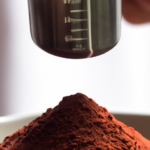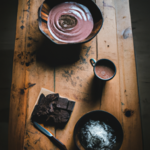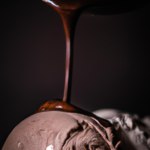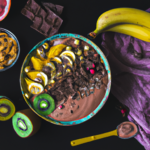Raw Food Ingredients
How To Make Hot Chocolate With Raw Cacao Powder

Hot chocolate made with raw cacao powder is a delicious and indulgent treat that is sure to please any chocolate enthusiast. Being a self-professed chocoholic, I have dedicated years to perfecting the technique of crafting the ultimate cup of hot chocolate. In this post, I will reveal my proven method for making a luxuriously smooth and creamy hot chocolate using raw cacao powder.
Gathering your ingredients is the first step in this tantalizing journey. Once you have everything you need, it’s time to heat your milk to the perfect temperature.
Adding the raw cacao powder is the key to achieving that intense chocolate flavor. Sweetening to taste is crucial, as everyone’s preferences differ. Mixing everything together thoroughly ensures a smooth and velvety texture.
If you’re feeling adventurous, adding additional flavorings can take your hot chocolate to the next level. And for that extra touch of indulgence, frothing the hot chocolate is an option worth exploring.
So grab your favorite mug, add some optional toppings, and get ready to savor the rich and velvety goodness of hot chocolate made with raw cacao powder.
Key Takeaways
- Hot chocolate made with raw cacao powder is a delightful and decadent treat.
- Alternative sweeteners like honey or maple syrup can be used instead of refined sugars.
- Raw cacao powder is packed with antioxidants, vitamins, and minerals, offering numerous health benefits.
- Frothing the hot chocolate creates a luxurious and creamy texture.
Gather Your Ingredients
Now that you’ve got all your ingredients ready, it’s time to start making your delicious hot chocolate with raw cacao powder.
The first step is to choose the right cacao powder. Look for raw cacao powder, which is made from unroasted cacao beans and retains more of its natural nutrients and antioxidants. Avoid cocoa powder, as it has been processed at high temperatures and may not have the same health benefits.
Next, consider alternative sweeteners for your hot chocolate. Options like honey, maple syrup, or coconut sugar can add a touch of sweetness without the refined sugars found in traditional hot chocolate mixes.
Once you have chosen your cacao powder and sweetener, it’s time to move on to the next step: heating your milk.
Heat Your Milk
First, warm up your milk until it’s steaming hot. This step is crucial for achieving the perfect hot chocolate consistency.
You can use any type of milk you prefer, such as cow’s milk, almond milk, coconut milk, or soy milk. Alternative milk options are great for those who are lactose intolerant or following a vegan diet.
Heating the milk will enhance the flavors and help dissolve the raw cacao powder. Raw cacao powder is made from crushed cacao beans and is known for its rich chocolate flavor and numerous health benefits. It is packed with antioxidants, vitamins, and minerals that can boost your mood and improve your cardiovascular health.
Once your milk is hot, you can move on to the next step of adding the raw cacao powder for a decadent and nutritious hot chocolate experience.
Add Raw Cacao Powder
Indulge your senses by sprinkling a pinch of heavenly darkness into your steaming cup of milk. Add raw cacao powder to elevate your hot chocolate to a whole new level of richness and flavor. Not only does raw cacao powder provide a deep, chocolatey taste, but it also offers numerous health benefits. Packed with antioxidants and minerals like magnesium and iron, raw cacao powder can boost your mood and support your overall well-being. To make your hot chocolate even more exciting, consider experimenting with alternative ingredients such as almond milk or coconut milk for a dairy-free option. These substitutions can add a unique twist to your beverage while catering to different dietary preferences. Now that we have added the raw cacao powder, let’s move on to the next step and sweeten to taste.
Sweeten to Taste
To add a touch of refinement, simply adjust the sweetness of your exquisite beverage to suit your personal preference.
There are various sweetening alternatives you can choose from to enhance the flavor of your hot chocolate made with raw cacao powder. You can use natural sweeteners like honey or maple syrup for a healthier option. These sweeteners not only provide a natural sweetness but also offer additional health benefits such as antioxidants and minerals.
Another alternative is coconut sugar, which has a lower glycemic index compared to regular sugar. By using these alternatives, you can enjoy a guilt-free indulgence without compromising on taste.
Once you have sweetened your hot chocolate to your liking, it’s time to move on to the next step and mix well to ensure all the flavors are blended harmoniously.
Mix Well
Once you’ve perfected the sweetness of your exquisite beverage, it’s time to blend all the flavors harmoniously by mixing well. This step is crucial to ensure a smooth and creamy hot chocolate with raw cacao powder. Here are some tips to help you achieve the perfect consistency:
- Start by adding your preferred hot chocolate mix to a cup or mug.
- Slowly pour in hot milk, stirring continuously to dissolve the powder completely.
- Use a whisk or a frother to create a rich and creamy texture.
- Make sure to scrape the sides and bottom of the cup to incorporate any remaining powder.
By following these steps, you’ll create a velvety and indulgent hot chocolate experience.
Now, let’s move on to the next section where we’ll explore the option of adding additional flavorings (optional).
Add Additional Flavorings (Optional)
Enhance your creamy creation even further by exploring a world of tantalizing flavors that can transform your hot chocolate into a decadent treat.
To add an exciting twist, sprinkle a pinch of cinnamon powder on top of your hot chocolate. This warm and aromatic spice will infuse your drink with a subtle and comforting flavor that pairs perfectly with the rich taste of raw cacao.
Alternatively, for a refreshing twist, try adding a mint infusion to your hot chocolate. Simply steep a few fresh mint leaves in hot water for a few minutes, then strain the liquid into your hot chocolate mixture. The minty freshness will elevate your drink to a whole new level of indulgence.
Now, let’s move on to the next section and learn how to froth your hot chocolate (optional).
Froth Your Hot Chocolate (Optional)
Get ready to take your hot chocolate experience to the next level by learning how to expertly froth your velvety creation. Frothing hot chocolate adds a luxurious texture and enhances the overall taste. There are different methods you can use to froth hot chocolate, depending on the equipment you have. One method is to use a handheld frother, which creates a light and airy foam. Another option is to use a blender or a milk frother, which produces a thicker and creamier froth. Frothing hot chocolate with raw cacao powder has its benefits. The natural fats in cacao powder help create a rich and velvety texture, while also adding a distinct flavor to the drink. Now that your hot chocolate is frothy and delicious, it’s time to serve and enjoy this indulgent treat.
Serve and Enjoy
To savor the frothy delight, simply pour your velvety hot chocolate into a cozy mug and top it off with marshmallows or a dollop of whipped cream. Take a moment to relish the warm and comforting aroma.
Here are four reasons why this indulgence is not just delicious, but also good for you:
-
Health benefits of raw cacao powder: Raw cacao powder is rich in antioxidants, which help reduce inflammation and protect against cell damage.
-
Different variations of hot chocolate recipes: Experiment with adding spices like cinnamon or nutmeg, or try a pinch of sea salt for a unique twist on the classic hot chocolate.
-
Enjoyment and relaxation: Sipping on a hot chocolate can provide a sense of comfort and relaxation, helping you unwind after a long day.
-
Mood booster: Raw cacao powder contains compounds that promote the release of endorphins, which can enhance your mood and make you feel happier.
Now, let’s move on to optional toppings to further enhance your hot chocolate experience.
Optional Toppings
Add an extra layer of deliciousness to your velvety hot cocoa by sprinkling it with crushed peppermint candies for a refreshing minty twist. The combination of the rich chocolate flavor and the cool, refreshing taste of peppermint creates a delightful contrast that will satisfy your taste buds.
Additionally, you can enhance your hot chocolate experience by adding fluffy marshmallows and a dollop of whipped cream on top. The marshmallows will melt slightly, creating a creamy texture, while the whipped cream adds a light and airy touch.
These optional toppings not only elevate the visual appeal of your hot cocoa but also add a delightful sweetness and creaminess to each sip. Enjoy the indulgence of this decadent treat with these delightful additions.
Frequently Asked Questions
What type of milk should I use to make hot chocolate with raw cacao powder?
For hot chocolate with raw cacao powder, vegan milk alternatives such as almond, soy, or oat milk can be used. Each type of milk offers different benefits, such as creaminess, nuttiness, or a subtle sweetness, enhancing the flavor of the hot chocolate.
Can I use regular cocoa powder instead of raw cacao powder?
Regular cocoa powder can be substituted for raw cacao powder in hot chocolate. However, raw cacao retains more nutrients and antioxidants due to minimal processing. As the saying goes, "You get what you pay for."
How much raw cacao powder should I add to my hot chocolate?
To determine the amount of raw cacao powder to add to hot chocolate, consider the desired taste and health benefits. Raw cacao powder offers numerous benefits and can be used in various recipes, providing a rich and distinct flavor profile.
What are some popular flavorings that can be added to hot chocolate?
Popular flavorings that can enhance hot chocolate include vanilla extract, cinnamon, peppermint, and caramel. These flavored hot chocolate alternatives add a delightful twist to your beverage. Additionally, spices like nutmeg and chili powder can also create a unique and delicious hot chocolate experience.
What are some creative and unique optional toppings for hot chocolate?
For creative presentation ideas and unconventional hot chocolate toppings, try adding a dollop of whipped cream, a sprinkle of cinnamon or nutmeg, a drizzle of caramel or chocolate sauce, or even a dash of chili powder for a spicy twist.
Can Raw Cacao Powder be Used for Hot Chocolate as Well as Toppings?
Yes, raw cacao powder can be used for hot chocolate as well as toppings. Its rich, intense flavor makes it an ideal choice for both applications. For a delicious chocolate topping recipe, raw cacao can be mixed with a sweetener and a bit of coconut oil for a delectable treat.
Conclusion
In conclusion, making hot chocolate with raw cacao powder is a delightful and straightforward process that can be enjoyed by anyone. By following these simple steps, you can create a rich and flavorful hot chocolate that will warm your soul and bring a smile to your face.
So go ahead and treat yourself to this indulgent and comforting beverage. Cheers to the simple pleasures in life!
Rachael, the Editor in Chief of RachaelsRawFood.com, is an inspiring and passionate individual who has dedicated her life to promoting the benefits of a raw food lifestyle. Known for her vibrant and energetic personality, Rachael has built a strong online presence that has transformed her personal journey into a thriving community of raw food enthusiasts.
Raw Food Ingredients
How Much Caffeine in Cocoa?
Not all cocoa products are created equal when it comes to caffeine content – discover which one might surprise you!
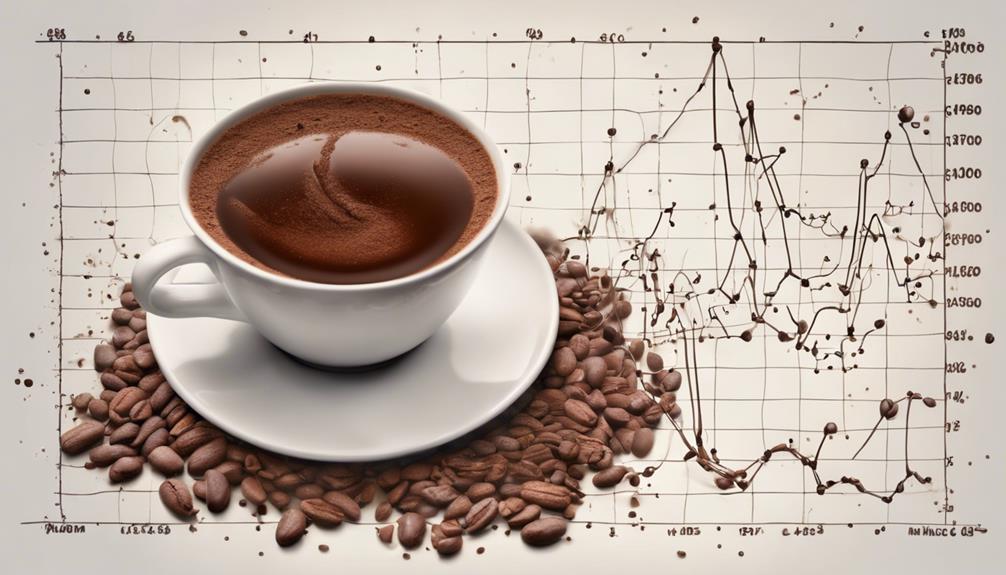
When evaluating the caffeine levels in cocoa, it’s important to recognize that dark chocolate contains around 43 mg of caffeine per 100 grams due to its high cocoa solid content. Dark chocolate has a higher caffeine content compared to milk or white chocolate. This means that consuming dark chocolate in moderation can assist in managing your caffeine intake. On the other hand, milk chocolate has around 20 mg of caffeine per 100 grams while white chocolate is caffeine-free. Cocoa powder, commonly used in baking and beverages, contains a substantial 230 mg of caffeine per 100 grams. Being aware of these distinctions in chocolates can help you make informed decisions about your caffeine consumption.
Key Takeaways
- Caffeine content in cocoa varies based on cocoa solid concentrations.
- Unsweetened cocoa powder can contain around 230 mg of caffeine per 100 grams.
- Roasting cocoa solids influences the final caffeine content in cocoa products.
- Dark chocolate, with high cocoa solid content, has more caffeine than milk chocolate.
- Moderate consumption of cocoa products helps manage caffeine intake.
Caffeine Content in Dark Chocolate
Dark chocolate boasts a caffeine content of approximately 43 mg per 100 grams, mainly deriving from its higher cocoa solid composition. When we indulge in this decadent treat, we aren't only savoring its rich cocoa flavor but also a subtle caffeine kick. Compared to milk or white chocolate, dark chocolate contains a higher amount of caffeine.
Please bear in mind that moderate consumption of dark chocolate can assist individuals in managing their caffeine intake effectively. The caffeine levels in dark chocolate are about one-fourth of what you'd find in a standard cup of coffee. So, if you're looking for a milder caffeine boost, a piece of dark chocolate might just do the trick without the jitters that sometimes accompany a strong cup of coffee.
Enjoy your dark chocolate in moderation, savoring both its taste and the gentle pick-me-up it provides.
Caffeine Levels in Milk Chocolate
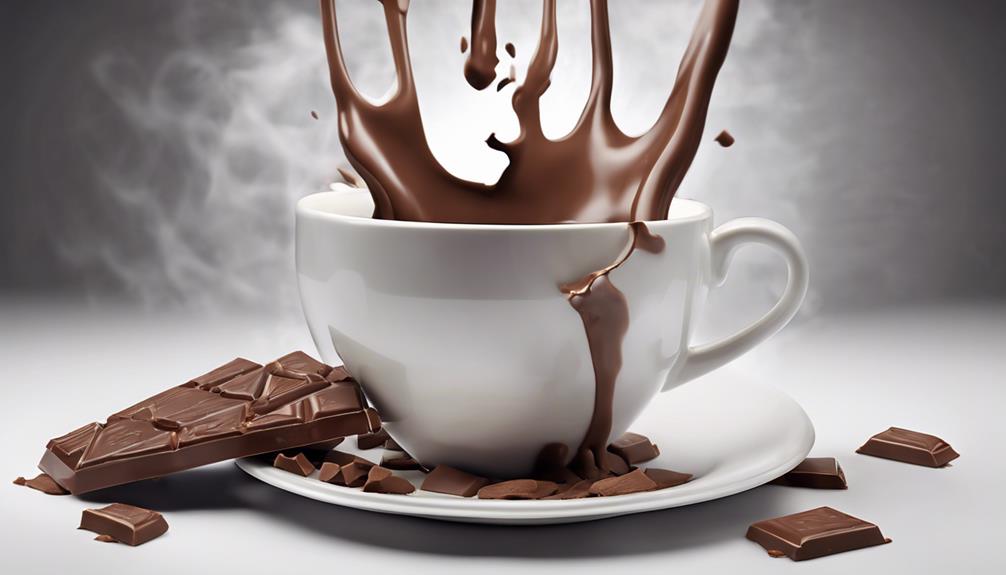
Milk chocolate, known for its creamy texture and sweet flavor, contains a modest caffeine content of approximately 5.6 mg per ounce, as indicated by USDA data. Unlike dark chocolate, milk chocolate has a lighter color due to lower cocoa content, resulting in reduced caffeine levels.
The delightful creamy taste in milk chocolate comes from a harmonious blend of cocoa and milk powder. While dark chocolate boasts higher caffeine content, milk chocolate remains a popular choice for those seeking a sweet treat with minimal caffeine intake.
Caffeine Presence in White Chocolate
With its unique composition excluding cocoa solids, white chocolate stands out as a caffeine-free alternative to its darker counterparts. White chocolate is crafted from a blend of cocoa butter, milk powder, sugar, and vanilla, making it a delectable treat without the stimulating effects of caffeine. For individuals sensitive to caffeine, white chocolate offers a creamy texture and indulgent flavor without the worry of unwanted side effects. This makes it a popular choice for desserts among those looking to steer clear of caffeine in their sweet treats.
Compared to dark chocolate, which contains cocoa solids and hence caffeine, white chocolate provides a caffeine-free option for those seeking a more mellow indulgence. So, if you're in the mood for a luscious and smooth chocolate experience without the buzz of caffeine, white chocolate is the perfect choice for your next dessert delight.
Impact of Cocoa Solids on Caffeine
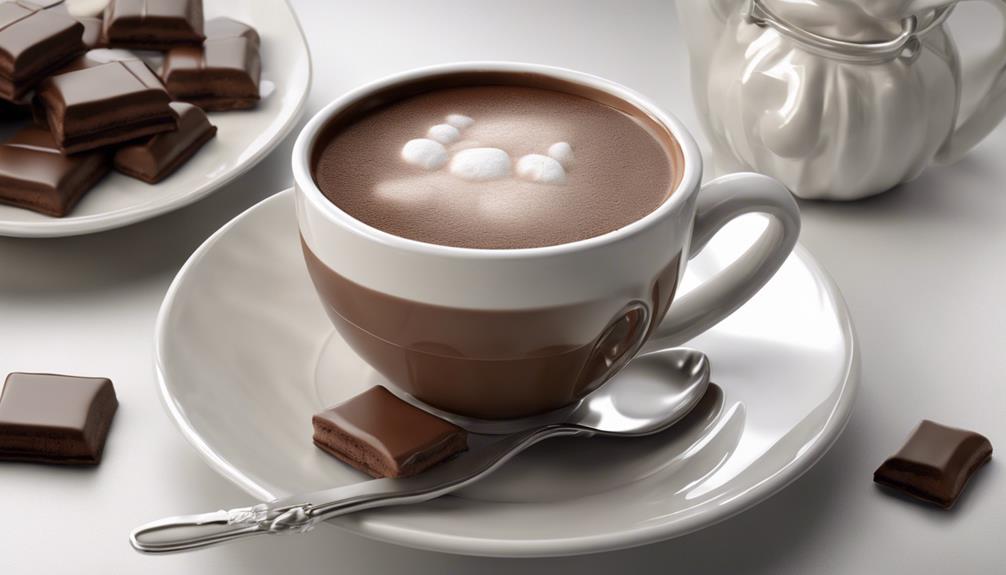
In determining the caffeine levels in cocoa products, the percentage of cocoa solids plays a significant role. Here are some key points about the impact of cocoa solids on caffeine content:
- Caffeine Derivation: The caffeine content in cocoa primarily comes from cocoa solids, making it an important factor in determining the overall caffeine levels in cocoa-based products.
- Dark Chocolate: Dark chocolate, known for its higher cocoa solid content, tends to contain more caffeine compared to milk or white chocolate varieties due to this higher concentration.
- Unsweetened Cocoa Powder: A 100g serving of unsweetened cocoa powder can contain around 230mg of caffeine, reflecting the impact of the high cocoa solid content in this form.
- Health Benefits: The roasting process of cocoa solids not only affects the flavor profile but also influences the caffeine content, contributing to the potential health benefits associated with consuming cocoa products like hot cocoa.
Comparing Caffeine in Different Chocolates
Comparing the caffeine content in different chocolates reveals varying levels based on their cocoa solid concentrations. Dark chocolate contains about 43 mg of caffeine per 100 grams, making it a stronger caffeinated option compared to milk chocolate, which only has around 20 mg per 100 grams.
Surprisingly, white chocolate, derived from cocoa butter, doesn't contain any caffeine at all. For those seeking a more potent caffeine kick, cocoa powder is the way to go, boasting a high concentration of 230 mg per 100 grams.
The amount of caffeine in chocolate products is closely linked to the cocoa solid content, with dark chocolate containing the highest levels. So, the next time you're craving a chocolate treat but also need a little energy boost, opt for dark chocolate to get the most caffeine per bite.
Frequently Asked Questions
Is There More Caffeine in Cocoa Than Coffee?
There's more caffeine in cocoa than in coffee. Cocoa powder packs 230 mg per 100 grams, surpassing most coffee varieties. Dark chocolate has even more caffeine due to higher cocoa content. It's a rich, unique energy source.
Is There a Lot of Caffeine in Hot Cocoa?
There isn't a lot of caffeine in hot cocoa. It depends on the brand and recipe. Starbucks hot chocolate has around 25 mg per serving, while basic mixes have about 5 mg. The amount of cocoa powder used influences the caffeine content.
Is There Caffeine in Hershey's Cocoa?
Absolutely, Hershey's Cocoa does contain caffeine, but it's not overwhelming. It adds a delightful hint of energy in each spoonful. Perfect for baking or a cozy cup of hot chocolate. Just the right amount!
Is Cocoa a Stimulant Like Caffeine?
Cocoa stimulates like caffeine due to its theobromine content. Decaf versions offer a solution for caffeine-sensitive folks. Options include regular cocoa with caffeine, Dutch-processed cocoa with less, and decaf cocoa with reduced caffeine while keeping healthful compounds.
What are the potential health effects of consuming high levels of caffeine in cocoa?
Unveiling cocoa caffeine levels can lead to potential health effects of excessive consumption. High levels of caffeine in cocoa may contribute to insomnia, nervousness, and fast heartbeat. It can also cause gastrointestinal discomfort and exacerbate anxiety disorders. Moderation in consuming caffeinated cocoa products is recommended for overall health.
Conclusion
To sum up, the caffeine content in cocoa varies depending on the type of chocolate. Dark chocolate typically has the highest caffeine levels, followed by milk chocolate and white chocolate. The amount of cocoa solids in the chocolate also affects the caffeine content.
Remember, just like different chocolates have different levels of caffeine, we all have unique strengths and abilities. Embrace your individuality and always aim for balance in everything you do.
Rachael, the Editor in Chief of RachaelsRawFood.com, is an inspiring and passionate individual who has dedicated her life to promoting the benefits of a raw food lifestyle. Known for her vibrant and energetic personality, Rachael has built a strong online presence that has transformed her personal journey into a thriving community of raw food enthusiasts.
Raw Food Ingredients
5 Key Differences: Caffeine Content in Cocoa Vs Coffee
Open the door to understanding the contrasting caffeine levels in cocoa and coffee, revealing surprising insights that will reshape your beverage choices.
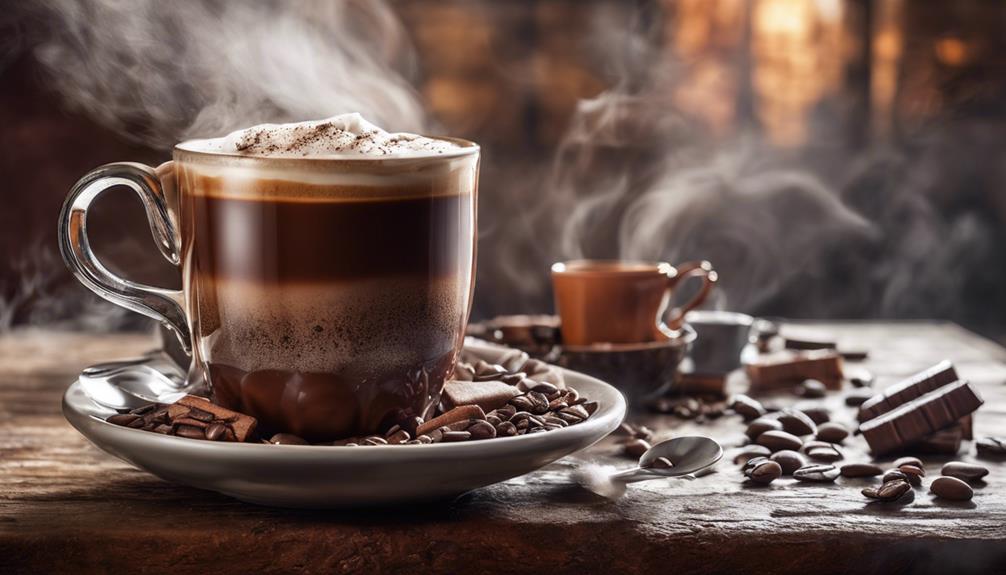
When comparing the caffeine levels in cocoa and coffee, it is important to understand that cocoa generally has lower caffeine content than coffee. Dark chocolate contains approximately 12 milligrams of caffeine per ounce, while hot cocoa typically ranges from 5 to 10 milligrams per ounce. In contrast, brewed coffee can have significantly higher levels, varying from 95 to 165 milligrams per 8-ounce cup.
Cocoa is considered a milder option for individuals aiming to limit their caffeine intake, with theobromine providing a gradual energy increase. Meanwhile, coffee's caffeine content offers immediate alertness, and understanding these distinctions can help you select based on your preferred effects.
Key Takeaways
- Cocoa contains lower caffeine levels but compensates with theobromine for a gradual energy increase.
- Coffee has higher caffeine content, offering an immediate alertness boost and potentially higher metabolic rate.
- Theobromine in cocoa promotes relaxation, while caffeine in coffee provides intense alertness and mood fluctuations.
- Hot chocolate is a good option for reducing caffeine intake while still benefiting from theobromine effects.
- Understanding caffeine variances helps make informed choices for desired energy levels and mood effects.
Caffeine Levels in Cocoa Vs Coffee
When comparing caffeine levels in cocoa versus coffee, it's evident that cocoa generally contains lower amounts per serving. Dark chocolate, made from cacao beans, contains around 12 milligrams of caffeine per ounce, while a 1-ounce serving of hot cocoa mix typically has 5-10 milligrams. Even a 16-ounce serving of Starbucks hot chocolate only contains about 25 milligrams of caffeine.
On the other hand, coffee, when brewed, can range from 95 to 165 milligrams of caffeine per 8-ounce cup, depending on the type and brewing method. This significant difference in caffeine content between cocoa and coffee makes cocoa a milder option for those looking to limit their caffeine intake.
Impact on Alertness and Energy
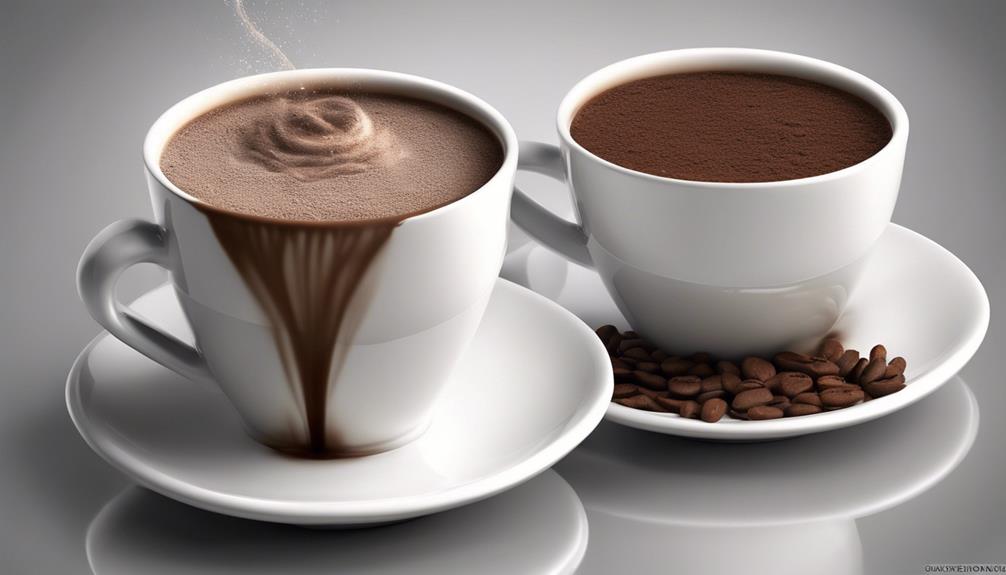
Typically, the immediate alertness and energy boost from caffeine in coffee can last for hours. This surge in alertness is due to caffeine's stimulating effect on the central nervous system. On the other hand, cocoa contains theobromine, which provides a more gradual increase in energy levels. Unlike caffeine, theobromine doesn't cause sudden spikes and crashes, offering a smoother energy curve.
Coffee's caffeine content can temporarily boost the metabolic rate, potentially supporting weight management efforts. This increased metabolic rate can aid in burning calories and may contribute to weight loss when combined with a balanced diet and regular exercise. Additionally, theobromine in cocoa contributes to the thermogenic effect, leading to mild calorie burning in the body.
Both caffeine and theobromine can influence mood. Caffeine tends to provide a more intense and quick-acting mood elevation, while theobromine promotes feelings of relaxation and contentment. Understanding the differences in alertness, energy, metabolic effects, and mood enhancements between cocoa and coffee can help individuals make informed choices based on their preferences and wellness goals.
Metabolic Variances and Effects
Regarding metabolic variances and effects, the varying caffeine levels between cocoa and coffee play a significant role. When comparing the metabolic impact of caffeine in cocoa and coffee, it is crucial to note that cocoa contains lower levels of caffeine but compensates with theobromine, which aids in the thermogenic effect, promoting calorie burning and metabolic activity. On the other hand, coffee, especially brewed varieties, contains higher levels of caffeine, potentially providing a temporary boost to the metabolic rate, which could assist in weight management. While caffeine in coffee offers a quick energy surge, theobromine in cocoa leads to a more gradual rise in energy levels, avoiding sudden spikes and crashes. To summarize the metabolic differences, I've created a table below:
| Aspect | Cocoa | Coffee |
|---|---|---|
| Caffeine Content | Lower levels | Higher levels |
| Additional Component | Theobromine | Caffeine |
| Metabolic Impact | Thermogenic effect | Temporary metabolic rate boost |
| Energy Levels | Gradual rise | Quick surge |
| Weight Management | Aids in calorie burning | Potential assistance |
Mood Enhancement Disparities

In comparing the mood enhancement effects of theobromine in cocoa and caffeine in coffee, notable disparities emerge in their impact on mental well-being.
The theobromine found in cocoa promotes relaxation and contentment, offering a gradual rise in energy levels that leads to a gentle and long-lasting mood enhancement experience.
On the other hand, caffeine delivers an intense and fast-acting boost in alertness, providing immediate energy levels that can lead to abrupt spikes and crashes.
While both theobromine and caffeine uplift mood, theobromine's effects are characterized by a steady and gradual increase in energy levels, creating a sense of calm and contentment.
In contrast, caffeine's impact is more intense and temporary, resulting in rapid alertness but also the potential for fluctuations in mood. Understanding these differences can help individuals choose between cocoa and coffee based on their desired mood enhancement effects.
Health Implications and Considerations
Health implications and considerations surrounding caffeine consumption warrant close attention due to its potential impact on various aspects of well-being. When comparing a cup of coffee to hot chocolate, it's vital to note the amount of caffeine present.
While coffee contains much caffeine, hot chocolate has less caffeine but isn't entirely devoid of it. The main active ingredients in hot chocolate are theobromine and caffeine, where theobromine is a relative of caffeine and also has stimulant effects, although milder. If you're looking to reduce your caffeine intake, opting for hot chocolate over a cup of coffee can be a good choice.
Being mindful of the caffeine content in chocolate products is important, especially if you're sensitive to caffeine or belong to vulnerable populations like children or pregnant women. Understanding the caffeine levels in different beverages allows you to make informed decisions about your consumption for better overall health.
Frequently Asked Questions
Is There Caffeine in Coffee Vs Cacao Powder?
Yes, there is caffeine in coffee, with around 140 milligrams in a 12-ounce cup. On the other hand, cacao powder contains only about 12 milligrams per tablespoon, making it a great caffeine-free alternative for those seeking a milder boost.
What Is the Difference Between Cocoa and Coffee?
When comparing cocoa and coffee, cocoa offers a rich, chocolatey flavor and is packed with antioxidants and minerals. Coffee, on the other hand, provides a robust, bitter taste and a jolt of caffeine for that morning pick-me-up.
Why Is Cocoa Better Than Coffee?
I believe cocoa is superior to coffee because it offers a gentler energy boost, promotes relaxation and contentment, and provides sustained vitality without sudden crashes. Plus, dark chocolate's theobromine supports cellular health and tastes delicious.
How Much Caffeine Is in Cocoa Powder Vs Decaf Coffee?
In cocoa powder vs decaf coffee, cocoa has 12-26mg of caffeine per tbsp, while decaf coffee holds 2-5mg per 8-ounce cup. The choice hinges on desired caffeine levels and flavor. I prefer cocoa's lower caffeine content.
How does the caffeine content in hot chocolate compare to coffee?
Hot chocolate caffeine content is significantly lower than that of coffee. While an 8-ounce cup of hot chocolate contains about 5-10 milligrams of caffeine, the same size of coffee can have anywhere from 95-200 milligrams. It’s a notable difference for those looking to limit their caffeine intake.
Conclusion
To sum up, while cocoa and coffee both contain caffeine, the levels vary significantly. Cocoa generally has lower caffeine content compared to coffee, impacting alertness, energy levels, and mood enhancement differently.
It's crucial to keep these differences in mind when choosing between the two beverages for your daily consumption. Remember, moderation is key to maintaining a healthy balance in your caffeine intake.
So, whether you prefer a cup of cocoa or a mug of coffee, enjoy it in moderation for the best benefits!
Rachael, the Editor in Chief of RachaelsRawFood.com, is an inspiring and passionate individual who has dedicated her life to promoting the benefits of a raw food lifestyle. Known for her vibrant and energetic personality, Rachael has built a strong online presence that has transformed her personal journey into a thriving community of raw food enthusiasts.
Raw Food Ingredients
A Guide to Becoming a Good King
Kingship demands wisdom, fairness, integrity, courage, and humility – essential traits for a successful reign and prosperous kingdom." Keep reading to uncover the secrets of becoming a good king.

In order to be a good king, one must embody wisdom, fairness, integrity, courage, and humility to lead the kingdom with honor. Wisdom is essential for making important decisions, fairness ensures just treatment for all, integrity builds trust and respect, courage is crucial for facing challenges, and humility reminds us of our humanity. Historical kings such as Solomon, Arthur, David, Charlemagne, and Ramses II serve as role models for these leadership traits.
As a king, embracing challenges, understanding the world, seeking personal growth, and learning from the past are essential responsibilities. Developing leadership skills, making wise decisions, and prioritizing the well-being of the people are key to effective kingship. Every step on the path to becoming a good king is critical for a successful reign and prosperous kingdom.
Key Takeaways
- Embrace wisdom for informed decisions.
- Practice fairness for just treatment.
- Uphold integrity to earn trust.
- Show courage in facing challenges.
- Maintain humility for empathy and respect.
Qualities of a Good King
Being a good king requires embodying qualities such as wisdom, fairness, integrity, courage, humility, and compassion in decision-making and leadership. Power comes with responsibility, and as a king, it's essential to wield this power wisely. Wisdom is vital in making sound judgments that benefit the kingdom as a whole. Fairness guarantees that all subjects are treated justly and equitably, fostering a harmonious society. Integrity is the foundation of trust and respect, key elements in effective leadership.
Courage is necessary to face challenges and make difficult decisions, even when met with opposition. Humility reminds a king of his humanity and the importance of humility in interactions with all subjects. Compassion demonstrates a king's care and empathy towards his people, fostering a sense of unity and loyalty. Effective communication is crucial for conveying decisions, listening to concerns, and inspiring confidence in leadership.
Historical Kings as Role Models

King Solomon, renowned for his wisdom and leadership, stands as an exemplar among historical kings who serve as role models for future leaders. Looking at figures like King Arthur, known for his justice and valor in medieval legends, and King David, celebrated for his faith and courage in battle, we find lessons that transcend time. Charlemagne's legacy of military conquests and cultural revival, alongside Ramses II's grand building projects and military campaigns, offer diverse insights into effective kingship. Below is a table summarizing key attributes of these historical kings:
| King | Attributes |
|---|---|
| King Solomon | Wisdom, leadership |
| King Arthur | Justice, valor |
| King David | Faith, courage |
| Charlemagne | Military prowess, culture revival |
| Ramses II | Building projects, military campaigns |
Studying these historical figures can provide valuable lessons on the multifaceted qualities that make a great ruler.
Responsibilities of Kingship
Embracing challenges and living authentically are central to fulfilling the responsibilities inherent in kingship. As men aspiring to be good kings, it's essential for us to understand that the world requires leaders who are kind, humble, and committed to personal growth.
The journey to becoming a good king involves more than just wielding power and responsibility—it entails sacrificing comfort for growth and transformation. Seeking the ancient path of masculinity, as exemplified by figures like Morgan, teaches us the importance of humility, vulnerability, and character development.
In fulfilling the responsibilities of kingship, we're entrusted with power not for our own gain, but for the betterment of the world around us. Just as seeds need Good Soil to flourish, we must nurture our own growth to lead effectively.
Leadership Skills for Kings

Developing essential leadership skills is crucial for aspiring kings seeking to fulfill their responsibilities with humility, vulnerability, and a focus on character development. As you study the world around us, the power and responsibility of what kingship entails become clearer. Here are some key points to think about on your path to becoming a king:
- Embrace challenges and live authentically.
- Seek ancient paths of masculinity for guidance.
- Reflect on your identity, purpose, and ability to be entrusted with power for good.
- Sacrifice comfort for growth, transformation, and participation in universal creativity.
The journey of becoming a king isn't just about gaining authority but about understanding the remarkable fellowship of like-hearted individuals who share similar goals. Engage in group discussion questions, consider between-session personal study, and explore the depths of your masculine soul. This is the path to restoring what it means to be a true king.
Importance of Wise Decision-Making
Steering through the intricacies of leadership, especially in the domain of kingship, requires a sharp focus on the art of prudent decision-making. Wise decision-making is like the compass guiding the ship of leadership towards success.
Good kings understand that their choices impact not just themselves but also the lives of those they rule over. They prioritize the well-being of their people over personal gains, embodying the essence of true leadership.
Seeking counsel from trusted advisors and reflecting on core values are essential practices in the domain of wise decision-making. By embracing humility and self-awareness, kings can navigate the complex web of choices with clarity and integrity.
Just like a six-session video Bible study can guide individuals in restoring the heart, wise decision-making is essential for becoming the kind of leaders our world needs. Let's start on this journey of radical reconstruction, where every decision is a step towards being counted among the good kings of history.
Frequently Asked Questions
What Is the Becoming a King Guide?
The Becoming a King guide is a transformative resource created by Morgan Snyder to help men grow into responsible kings. It offers practical tools and profound insights to aid personal development and transformation.
What Are the Qualities of a Good King?
Being a good king means embodying humility, wisdom, and integrity. Prioritizing the well-being of my people, making decisions for the greater good, and showing courage, justice, and compassion in all actions. Seeking counsel and valuing diverse perspectives is essential.
What Makes a True King?
Beneath the crown lies a heart that beats with humility and a spirit that soars with honor. True kings are forged in the fires of challenge, embracing authenticity and growth to inspire others.
What Makes a Real King?
Being a true king means embodying humility, courage, and empathy. It's about serving others and leading with integrity. I endeavor to cultivate these qualities daily, embracing challenges and seeking growth in all aspects of my life.
How Can Sacred Cacao be Incorporated Into Kingship Rituals?
In kingship rituals, the sacred cacao ritual holds great significance. The ceremonial drinking of cacao symbolizes the divine connection between the ruler and the spiritual realm. It is believed to impart wisdom and strength, making it a crucial element in the coronation and leadership rites of many cultures.
Conclusion
To sum up, becoming a good king requires a combination of qualities, skills, and responsibilities. Remember, 'With great power comes great responsibility.'
By studying historical kings as role models, practicing leadership skills, and making wise decisions, one can aspire to be a just and effective ruler.
It's a challenging path, but with dedication and perseverance, anyone can endeavor to be a worthy leader for their kingdom.
Rachael, the Editor in Chief of RachaelsRawFood.com, is an inspiring and passionate individual who has dedicated her life to promoting the benefits of a raw food lifestyle. Known for her vibrant and energetic personality, Rachael has built a strong online presence that has transformed her personal journey into a thriving community of raw food enthusiasts.
-

 Raw Food Ingredients2 months ago
Raw Food Ingredients2 months agoHow To Make Chocolate From Raw Cacao
-

 What is Raw Food?2 weeks ago
What is Raw Food?2 weeks agoHow To Remove Raw Mustard Oil Smell From Cooked Food
-

 Raw Food Ingredients4 weeks ago
Raw Food Ingredients4 weeks agoRaw Cacao Powder How Much For 8 Oz Hot Chocolate Recipe
-
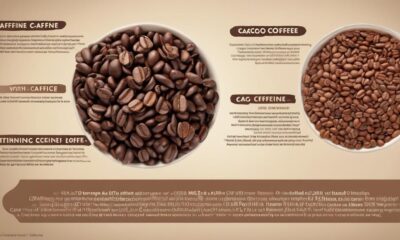
 Raw Food Ingredients4 weeks ago
Raw Food Ingredients4 weeks agoThe Truth Behind the Cacao Caffeine Myth
-
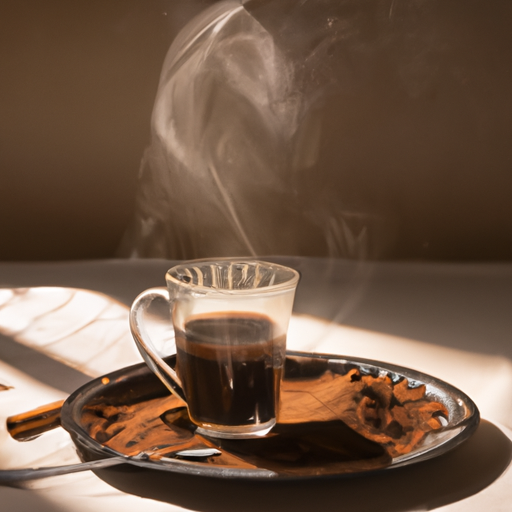
 Raw Food Ingredients2 months ago
Raw Food Ingredients2 months agoWhen Fasting Can I Drink Coffee With Raw Cacao Powder
-

 What is Raw Food?2 weeks ago
What is Raw Food?2 weeks agoHow To Store Raw And Cooked Food Separately
-

 Raw Food Ingredients2 months ago
Raw Food Ingredients2 months agoHow To Use Raw Cacao Beans
-

 Raw Food Ingredients4 weeks ago
Raw Food Ingredients4 weeks ago5 Steps to Make a Delicious Cacao Drink Recipe





